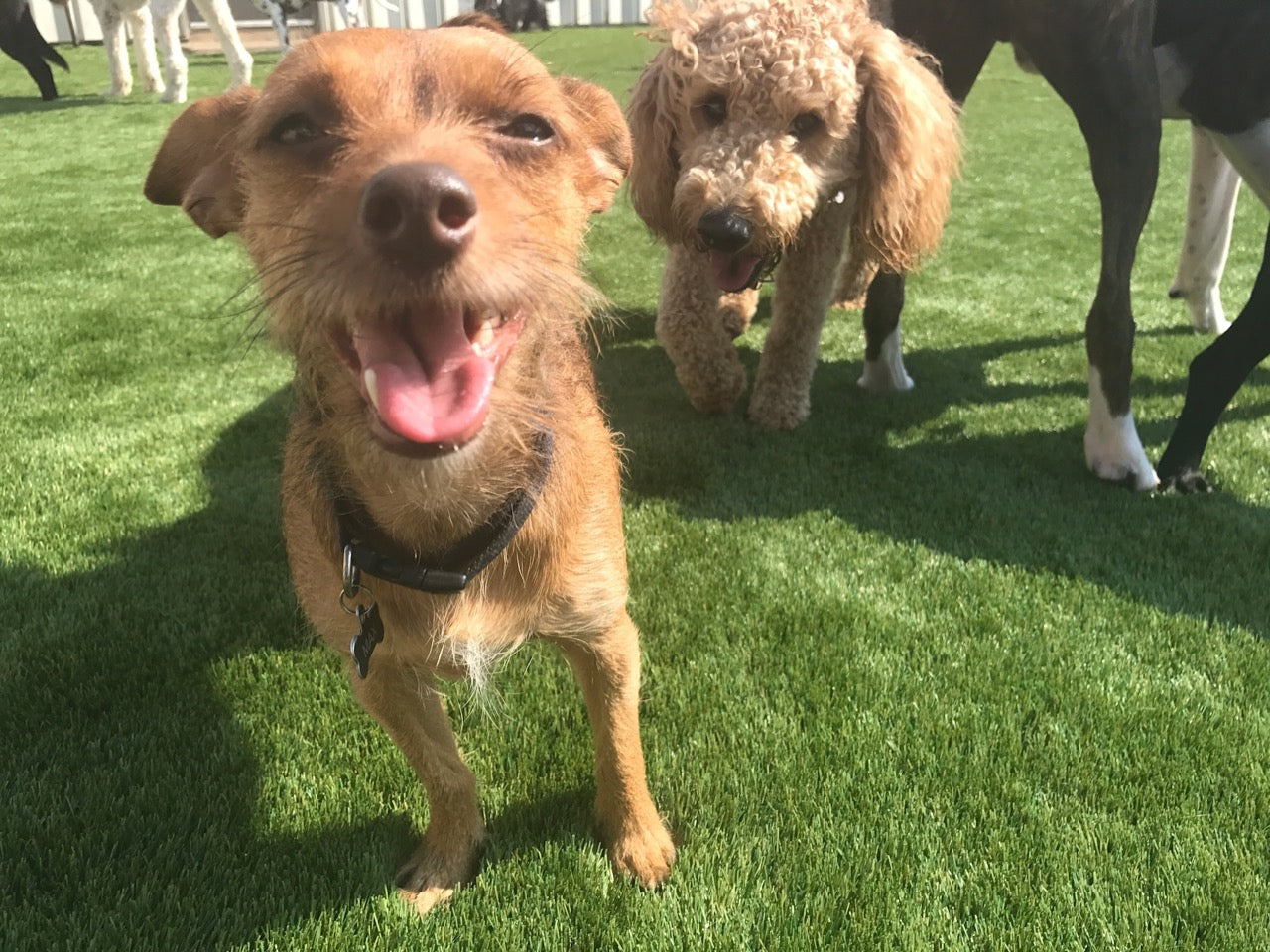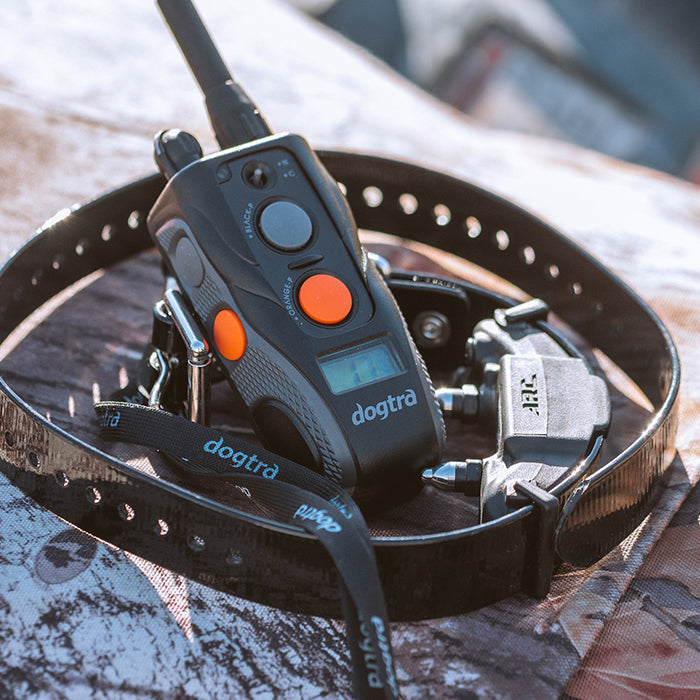E-COLLAR CONDITIONING: 3 THINGS TO KNOW BEFORE THE TRAINING

There are varying schools of thought on what is the most appropriate way to use a remote training collar. Some advocate that the dog should know all of the basic behaviors prior to adding the e-collar into the training protocol. Others believe that the e-collar can be incorporated earlier while the dog is still learning how to perform those basic behaviors.
What is the Right Way to Start E-Collar Training
Personally, I don’t advocate that one belief is more “right” than the other. I believe they are different sides of the same coin, and it can be the handler’s choice depending on what feels appropriate for their dog. What I do feel strongly about, though, is that no matter which approach is followed, it is critical to remember that the first time the dog feels stimulation is THE first time the dog feels stimulation.
This is critical because regardless of any previous training, the dog still needs a teaching phase when introduced to the sensation of stimulation for the first time. Dogs will not intuitively know what to do just because you push a button, and they feel a sensation they’ve never felt before. This teaching phase is referred to as “collar conditioning,” and it is the responsibility of the person using the tool to make sure the experience goes well for the dog.
When to Start Collar Conditioning
Collar conditioning should begin as soon as a dog is introduced to a new type of collar that delivers stimulation. This is crucial to ensure a positive experience for the dog. Without proper collar conditioning, the dog may not understand the purpose of the sensation they are feeling, leading to confusion or fear. By taking the time to condition the dog to the collar, the dog can learn what is expected of them, and the sensation becomes a useful tool in their training. It is the owner's responsibility to guide the dog through this process, making sure that the experience is a positive one.
How to Start with E-Collar Conditioning
A successful collar conditioning experience is impacted by the handler’s knowledge of the equipment and by understanding a bit about how dogs learn and communicate. If you are new to using a remote collar, here are three things to focus on before you start adding the remote collar to your dog’s training program:
1. Familiarize Yourself with the Equipment
When we get behind the wheel of a new car, it’s helpful to sit in the driver’s seat for a bit to get comfortable with where the gear shift, turn signals, wiper blades, and other paddles or switches are located. It’s also helpful to adjust the seat and mirrors to suit your preferences.
It is no different when you begin to incorporate new gear into your dog training routine. If you know your gear well, operating it will be a much smoother experience. First of all, make time to read the instruction manual! It will familiarize you with the basics of how to turn on/off, charge your unit, and fit it properly on the dog.
Then practice operating the remote before you begin to use it on your dog. Get used to the button placement and adjustment dials. If possible, learn to adjust the stimulation levels and switch your fingers between the various buttons (tone, vibration, momentary/continuous) single-handedly and without needing to look at the transmitter. Being able to confidently operate the remote with one hand without looking at it will make it far easier to keep your eyes on the dog, which is where you need your focus to be. Plus, it will leave the other hand free to handle the leash, giving rewards and helping as needed.
2. Understand your Dog’s Body Language
The vast majority of a dog’s communication repertoire is expressed through their body language. Body language is the feedback that helps the trainer to make judgment calls that guide the training plan.
There is a difference in the behavior of a dog expressing confusion versus a dog that is distracted versus a dog that is intentionally disobeying a command. If you don’t know how to read the differences in body language between those various states of mind, you won’t know what adjustments to make to your training plan or your equipment.
Confusion is different from disobedience in that the dog is trying to respond to the requested command. He is not performing the correct response, but he is aware of the sensation/command sequence and is attempting a behavioral response. It is a misreading of body language and a handler error to turn the level of stimulation up to try to fix confusion problems. A higher level of e-collar pressure will not suddenly “un-confuse” the dog.
If you don’t already possess skills in interpreting a dog’s body language, find a competent professional to teach you or do some research and self-study to sharpen your ability.
3. Practice Your “Helping” Skills
The e-collar is not a standalone tool. It can influence the dog’s behavior and it can function as an invisible leash. However, it only does those things well if properly combined with the knowledge of how to train with it. Your training knowledge needs to include ways to influence or “help” your dog perform commands properly.
For instance, if you are teaching your dog to come to you, you can help him do so in a number of ways: You can use a bit of pressure or pop on a long line to get him moving in your direction. You can bend down and clap your hands to motivate him to come toward you. You can use his desire to be with you by turning and walking away from him. You could also use a lure in the form of a toy or treat to entice him to come to you. There is no one perfect way that works for every single dog, but it is critical that you have a few options at your disposal.
How Long Does it Take For a Dog to Get Used to E-Collar?
The process of getting a dog used to an e-collar can vary in time, but it's important to remember that it requires patience and a positive attitude. Proper collar conditioning is necessary to help the dog understand and respond to the stimulation. This could take anywhere from a few days to several weeks, depending on the individual dog and their prior training experience. It's important to take it slow and make the process as positive and stress-free as possible. Gradually increasing the intensity of stimulation and rewarding the dog for positive behavior can help speed up the process and make it a successful experience for both the dog and the owner.
The sensation of stim will be new and unique when you first start collar conditioning your dog. That is why he may not respond as you expect, even if he’s already been trained to understand all the basic behaviors. Adding something new could confuse any of us. Just because we are fluent in English doesn’t mean we would be able to pick up sign language the first time we’re exposed to it. It would take practice and repetition to become fluent in a new form of communication. Having a variety of ways to help your dog will ensure that he is learning how to respond properly to the new e-collar language.
Final Thoughts on E-Collar Conditioning
Adding a remote collar to your dog’s training is a great way to improve reliability and gain off-leash control. The techniques are not particularly difficult, but it is important to have some basic handler knowledge before you start. Once you combine an understanding of your training equipment with the ability to interpret body language and proficiency to help your dog do the right thing, you have a winning combination that sets you on a path for successful e-collar training!




